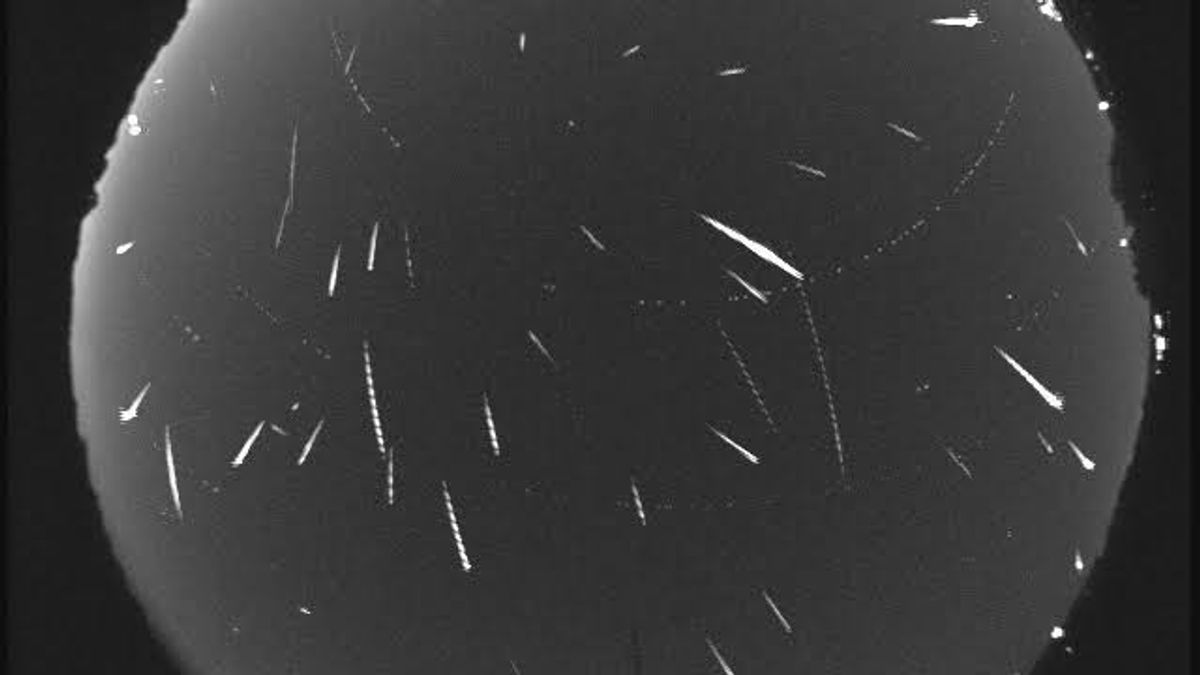JAKARTA - Indonesia will again be treated to the annual celestial phenomenon, the Geminid meteor shower. In fact, this can be seen since last December 8, but the peak will occur on December 15.
According to researcher from the Space Research Center of the Aeronautics and Space Research Organization of the National Research and Innovation Agency (BRIN), Andi Pangerang said the Geminid meteor shower was active from December 3 to December 20, with a maximum intensity of 150 meteors per hour on December 15.
This phenomenon can be seen throughout Indonesia from the northeast since December 8 at 20:15 local time until it dims in the northwest before sunrise.
During that maximum intensity period, the best way to view multiple meteors was to look at the sky when the observation site was directed to a meteor shower beam spot, found in the constellation Geminid.
More meteors from Geminid showers will be visible when the beam point is above the horizon, with the number of meteors rising as the spot rises in the sky.
Andi explained that the intensity of the Geminid meteor shower in Indonesia is only 86-107 meteors per hour. This is because the height of the radian point during transit is between 46 and 63 degrees above the north horizon.
Launching Space, Monday, December 12, meteor showers occur when Earth is on its annual journey around the Sun, passing through debris clouds left by comets or asteroids.
These fragments enter Earth's atmosphere at high speed and burn creating light lines, occasionally bright fireballs are created by larger chunks of gravel-sized material.
The Geminid meteor shower itself comes from the dust remnant of the 3200 Phaethon asteroid traversed by Earth every December. The geocentric rate reaches 126,000 km per hour.
The 3.6-mile-wide space rock is closer to the Sun than any other asteroid and is considered a strange hybrid somewhere between asteroids and comets.
Although 3200 Phaethons are made up of rock (like asteroids) rather than ice (like comets), it becomes bright as it approaches the Sun every 524 Earth days similar to cometary behavior, not asteroids.
Comets usually act like this when the ice material inside immediately changes from solid to gas due to the heat of the sun, a process called sublimation.
As a substitute for ice, which has been roasted from space rocks for a long time thanks to the frequent close contact with our star, the 3200 Phaethon beam as it approaches the Sun may come from the sodium sesisan found by scientists in 2021.
As the asteroid approaches the Sun, its sodium heats up and evaporates. It has spent elements on the surface of 3200 Phaethon, which explains why when its debris enters the atmosphere at a speed of 79,000 miles per hour to create Geminid, this meteor is low in sodium.
To learn more about comets or these strange hybrid asteroids and the source of Geminid meteor showers, Demonstrations and Space Technology Experiments for interplanetary travel with the Phaethon flyby and dust missions, or DESTINY+ missions, will fly past 3200 Phaethon later this decade.
The English, Chinese, Japanese, Arabic, and French versions are automatically generated by the AI. So there may still be inaccuracies in translating, please always see Indonesian as our main language. (system supported by DigitalSiber.id)








